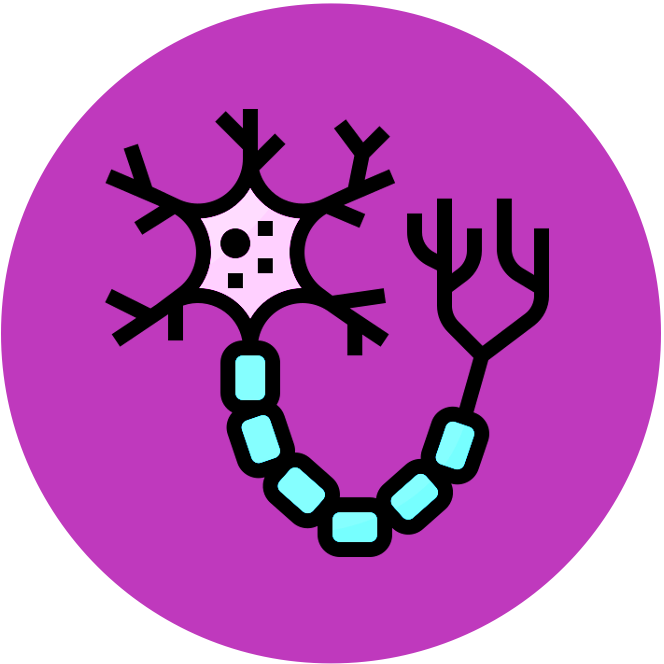

Nervous System
SL Content Statements
-
C2.2.1
Neurons as cells within the nervous system that carry electrical impulses
-
Students should understand that cytoplasm and a nucleus form the cell body of a neuron, with elongated nerve fibres of varying length projecting from it. An axon is a long single fibre. Dendrites are multiple shorter fibres. Electrical impulses are conducted along these fibres.
-
C2.2.2
Generation of the resting potential by pumping to establish and maintain concentration gradients of sodium and potassium ions
-
Students should understand how energy from ATP drives the pumping of sodium and potassium ions in opposite directions across the plasma membrane of neurons. They should understand the concept of a membrane polarization and a membrane potential and also reasons that the resting potential is negative.
-
C2.2.3
Nerve impulses as action potentials that are propagated along nerve fibres
-
Students should appreciate that a nerve impulse is electrical because it involves movement of positively charged ions.
-
C2.2.4
Variation in the speed of nerve impulses
-
Compare the speed of transmission in giant axons of squid and smaller non-myelinated nerve fibres. Also compare the speed in myelinated and non-myelinated fibres.
AOS: Students should be able to describe negative and positive correlations and apply correlation coefficients as a mathematical tool to determine the strength of these correlations. Students should also be able to apply the coefficient of determination (R2) to evaluate the degree to which variation in the independent variable explains the variation in the dependent variable. For example, conduction speed of nerve impulses is negatively correlated with animal size, but positively correlated with axon diameter.
-
C2.2.5
Synapses as junctions between neurons and between neurons and effector cells
-
Limit to chemical synapses, not electrical, and these can simply be referred to as synapses. Students should understand that a signal can only pass in one direction across a typical synapse.
-
C2.2.6
Release of neurotransmitters from a presynaptic membrane
-
Include uptake of calcium in response to depolarization of a presynaptic membrane and its action as a signalling chemical inside a neuron.
-
C2.2.7
Generation of an excitatory postsynaptic potential
-
Include diffusion of neurotransmitters across the synaptic cleft and binding to transmembrane receptors. Use acetylcholine as an example. Students should appreciate that this neurotransmitter exists in many types of synapse including neuromuscular junctions.



